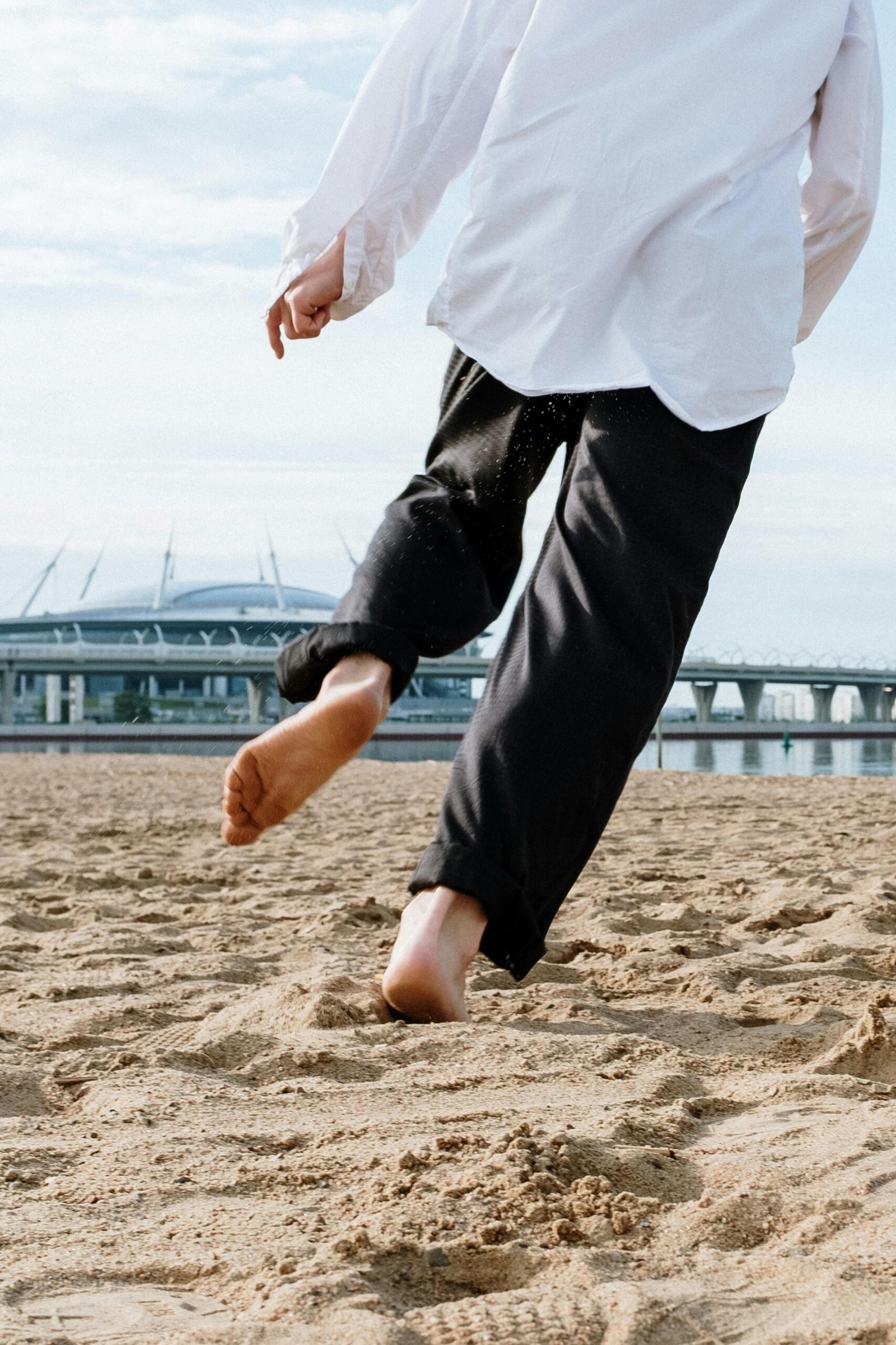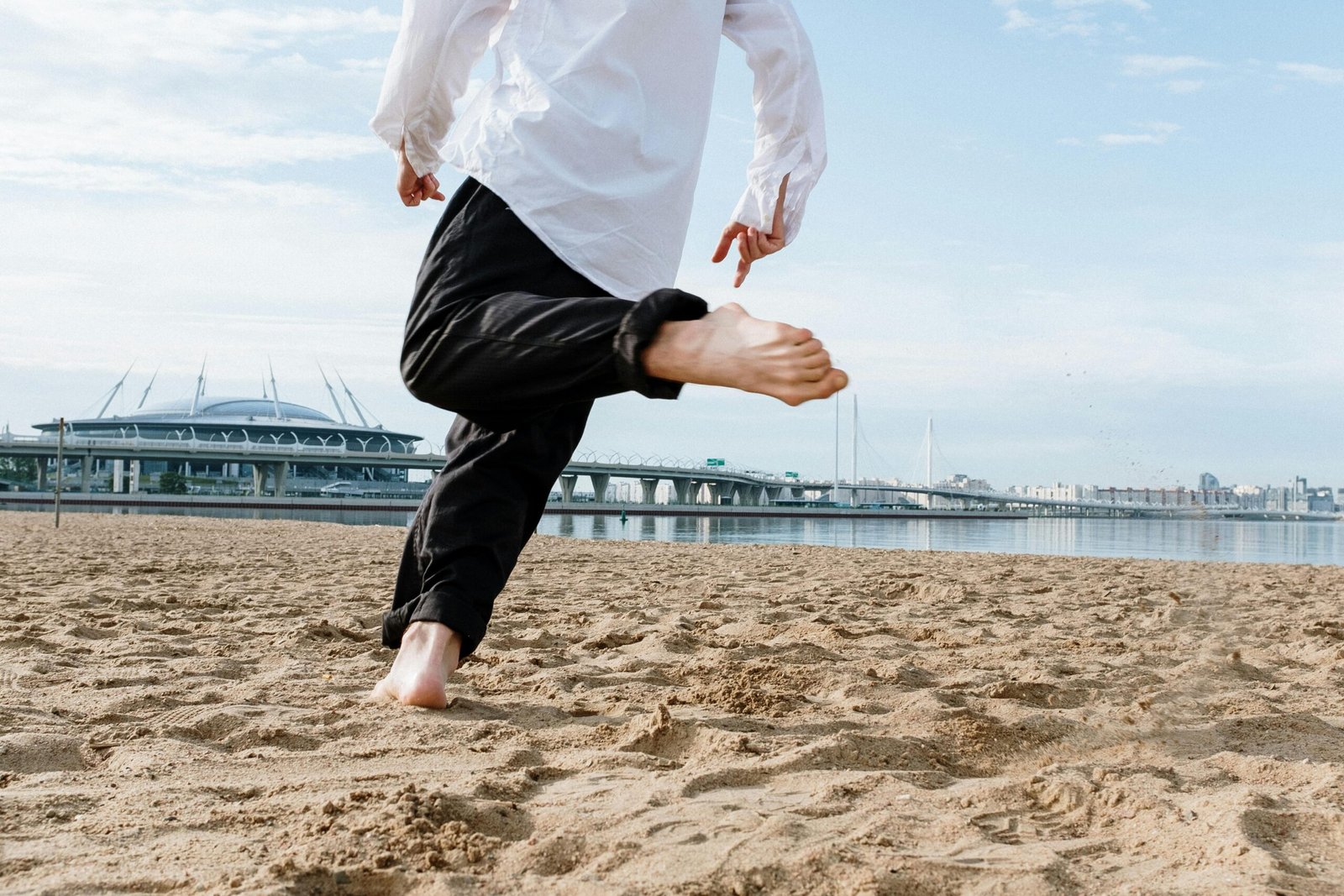
If you’ve ever experienced lower back pain while trying to sleep or relax, you know just how frustrating it can be. The good news is that there are effective ways to alleviate that discomfort when lying flat on your back. By making simple adjustments to your sleeping position and incorporating some gentle stretches and exercises, you can find relief and finally get the restful sleep you deserve. In this article, we will explore practical techniques that can help you banish that debilitating lower back pain and promote a more comfortable and peaceful night’s sleep.

Improving Your Mattress and Pillows
Choosing a supportive mattress
When it comes to relieving lower back pain, choosing the right mattress is crucial. A supportive mattress can help maintain proper alignment and reduce pressure on the lower back. Look for a mattress that provides adequate support for your body weight and conforms to the natural curves of your spine. A medium-firm mattress is often recommended for individuals with lower back pain.
Using a pillow under your knees
One simple and effective way to alleviate lower back pain when lying flat on your back is to place a pillow under your knees. This technique helps to maintain the natural curvature of the spine and reduces stress on the lower back. By elevating your knees slightly, you can relieve tension in the back muscles and promote relaxation.
Utilizing a rolled towel as lumbar support
If you find that your lower back is not adequately supported by your mattress, you can try using a rolled towel as lumbar support. Roll up a towel and place it horizontally across your lower back while lying on your back. This provides additional support to the natural curvature of the spine, helping to alleviate lower back pain and promote proper alignment.
Consider an adjustable bed base
For more severe cases of lower back pain, an adjustable bed base may be worth considering. These beds allow you to elevate your upper body and/or legs, which can relieve pressure on the lower back. By adjusting the position of the bed, you can find the most comfortable and supportive position to sleep in, reducing lower back pain and promoting a better night’s sleep.
Practicing Proper Sleeping Positions
Sleeping in a supine position
Sleeping on your back in a supine position can be beneficial for relieving lower back pain. This position helps to distribute weight evenly across your body and maintain proper spinal alignment. To enhance the benefits, place a small pillow or rolled towel under your lower back to provide additional support to the natural curvature of the spine.
Placing a small pillow under your lower back
Adding a small pillow under your lower back can further support the natural curve of your spine while sleeping on your back. This extra support can help alleviate pressure on the lower back and reduce discomfort. Experiment with different pillow sizes and thicknesses to find the most comfortable and supportive option for your individual needs.
Trying side sleeping with a pillow between your legs
If sleeping on your back is not comfortable for you, try sleeping on your side with a pillow between your legs. This position helps to align the hips, pelvis, and spine, reducing strain on the lower back. By placing a pillow between your legs, you can keep your hips and spine properly aligned and alleviate pressure on the lower back.

Strengthening Your Core Muscles
Engaging in regular exercise
Regular exercise is crucial for maintaining a strong and healthy back. Engaging in activities such as walking, swimming, or cycling can help strengthen the muscles that support your back, including your core muscles. Aim for at least 30 minutes of exercise most days of the week to promote overall back health and prevent future episodes of lower back pain.
Doing exercises to target your core muscles
In addition to regular exercise, incorporating specific exercises that target your core muscles can help relieve lower back pain. Some effective exercises include planks, bird dogs, and abdominal crunches. These exercises strengthen the muscles in your abdomen, lower back, and pelvis, providing stability and support to your spine.
Incorporating yoga or Pilates into your routine
Yoga and Pilates are both excellent forms of exercise for strengthening your core muscles and improving flexibility. These practices incorporate a variety of poses and movements that target the muscles in your back, abdomen, and hips. By improving core strength and flexibility, you can relieve lower back pain and prevent future injuries.
Stretching Your Lower Back
Knee-to-chest stretch
The knee-to-chest stretch is a simple yet effective exercise for stretching the muscles in your lower back. Lie on your back with your legs extended. Slowly bring one knee toward your chest, using your hands to pull it gently. Hold the stretch for 15 to 30 seconds, then switch legs. Repeat the stretch 2 to 4 times on each side.
Pelvic tilt exercise
The pelvic tilt exercise is another beneficial stretch for the lower back. Lie on your back with your knees bent and feet flat on the floor. Flatten your lower back by gently pressing it into the floor. Hold for a few seconds, then release. Repeat this movement 10 to 15 times, focusing on engaging the muscles in your lower back.
Child’s pose
Child’s pose is a restorative yoga pose that stretches the muscles in your lower back and promotes relaxation. Start by kneeling on the floor with your knees hip-width apart. Slowly lower your buttocks towards your heels and extend your arms forward. Allow your forehead to rest on the floor and breathe deeply into your lower back. Hold the pose for 1 to 3 minutes, focusing on releasing any tension in your lower back.
Cobra pose
The cobra pose is a gentle backbend that stretches the muscles in your lower back and strengthens your spine. Lie on your stomach with your legs extended and hands placed directly under your shoulders. Press your hands firmly into the floor and lift your chest, arching your back. Hold the pose for 15 to 30 seconds, then slowly lower back down. Repeat the movement 2 to 4 times.

Using Heat or Cold Therapy
Applying a heating pad to the affected area
Heat therapy can provide relief for lower back pain by increasing blood flow and reducing muscle tension. Apply a heating pad to the affected area for 15 to 20 minutes at a time. Make sure to use a towel or cloth between the heating pad and your skin to prevent burns. Repeat this process several times a day as needed.
Trying hot and cold therapy alternately
Alternating between hot and cold therapy can also be effective for relieving lower back pain. Start by applying a cold pack or ice pack to the affected area for 10 to 15 minutes to reduce inflammation. Follow this with a heat pack or hot water bottle for 15 to 20 minutes to relax the muscles. Repeat this cycle a few times to experience the benefits of both therapies.
Using an ice pack on the lower back
Cold therapy, in the form of an ice pack, can help reduce inflammation and numb the area, providing temporary relief from lower back pain. Wrap an ice pack in a towel and place it on the affected area for 10 to 15 minutes. Repeat this process several times a day as needed. Remember to always use a barrier, such as a towel, between the ice pack and your skin to avoid ice burn.
Trying Massage or Acupuncture
Getting a professional massage
A professional massage can be highly beneficial for relieving lower back pain. Massage helps to increase blood flow, relax muscles, and reduce tension in the lower back. Schedule a massage with a licensed massage therapist who has experience in treating lower back pain. They can target specific areas of tension and provide relief through various massage techniques.
Using a foam roller
If you prefer a more self-directed approach, using a foam roller can be a great option for self-massage. Lie on your back and position the foam roller under your lower back. Slowly roll back and forth, focusing on areas of tightness or discomfort. This can help release tension in the muscles of your lower back and provide temporary relief from pain.
Exploring acupuncture as a complementary treatment
Acupuncture is an ancient practice that involves the insertion of thin needles into specific points on the body. This practice has been found to be effective in relieving lower back pain. By stimulating these acupuncture points, the flow of energy in the body can be rebalanced, reducing pain and promoting healing. Consult with a licensed acupuncturist to explore this option as a complementary treatment for your lower back pain.
Using Over-the-Counter Medications
Nonsteroidal anti-inflammatory drugs (NSAIDs)
Over-the-counter nonsteroidal anti-inflammatory drugs, such as ibuprofen or naproxen, can help reduce inflammation and alleviate lower back pain. These medications can be effective in providing short-term relief, but it is important to follow the recommended dosage instructions and consult with your healthcare professional if you have any underlying health conditions or are taking other medications.
Topical analgesics
Topical analgesics, such as creams or gels containing menthol or capsaicin, can provide temporary relief from lower back pain. These products work by numbing the area or reducing pain signals. Apply the topical analgesic to the affected area as directed on the packaging, and avoid using it on broken or irritated skin.
Muscle relaxants
In some cases, muscle relaxants may be prescribed by a healthcare professional to help relieve severe muscle spasms and relax the muscles in the lower back. These medications should only be used under the guidance of a healthcare professional and for a short duration, as they can cause drowsiness and other side effects.
Implementing Relaxation Techniques
Deep breathing exercises
Deep breathing exercises can help relax the muscles and reduce stress, which can contribute to lower back pain. Find a quiet and comfortable place to sit or lie down. Take slow, deep breaths, inhaling deeply through your nose and exhaling fully through your mouth. Focus on relaxing your entire body, including your lower back, as you breathe deeply.
Progressive muscle relaxation
Progressive muscle relaxation is a technique that involves systematically tensing and then relaxing different muscle groups in the body. Start by tensing and releasing your toes, and gradually work your way up to your neck and shoulders. This technique can help release tension and promote overall relaxation, relieving lower back pain in the process.
Meditation or mindfulness practices
Meditation and mindfulness practices can help reduce stress and promote a sense of calm, which can be beneficial for managing lower back pain. Find a quiet and comfortable space to sit or lie down. Close your eyes and focus on your breath or a specific point of concentration. Allow your mind to become calm and present, letting go of any worries or tension in your lower back.
Consulting with a Healthcare Professional
When to seek medical advice
If your lower back pain persists for more than a few weeks, worsens over time, or is accompanied by other alarming symptoms such as numbness, tingling, or weakness, it is important to seek medical advice. A healthcare professional can assess your condition, provide a proper diagnosis, and recommend appropriate treatment options.
Physical therapy
A healthcare professional may refer you to a physical therapist who specializes in treating lower back pain. Physical therapy can involve a combination of exercises, manual therapy techniques, and other modalities to improve strength, flexibility, and function in the lower back. A physical therapist can also provide guidance on proper body mechanics and techniques for preventing future episodes of lower back pain.
Chiropractic care
Chiropractic care is another option to consider for managing lower back pain. Chiropractors use a hands-on approach to manipulate the spine and other joints in the body to provide pain relief. They may also recommend exercises, stretches, and lifestyle modifications to support the health of your lower back. Consult with a chiropractor to determine if this treatment modality is appropriate for your specific condition.
Maintaining a Healthy Lifestyle
Maintaining a healthy weight
Excess weight can put additional strain on your lower back, worsening lower back pain. Aim to maintain a healthy weight through a balanced diet and regular exercise. Losing weight, if necessary, can alleviate pressure on the spine and reduce the frequency and severity of lower back pain.
Avoiding excessive sitting or standing
Prolonged sitting or standing can contribute to lower back pain. Take regular breaks to stretch and move around, especially if you have a sedentary job. If you need to stand for long periods, use supportive footwear and consider using a cushioned mat to reduce the impact on your lower back.
Using proper lifting techniques
Improper lifting techniques can strain your lower back and lead to pain and injury. When lifting heavy objects, bend at the knees and use your leg muscles to lift rather than relying solely on your back. Hold the object close to your body and avoid twisting or jerking motions.
Staying hydrated
Staying hydrated is important for the overall health of your body, including your muscles and joints. Drinking an adequate amount of water helps keep your spinal discs well-hydrated, reducing the risk of disc degeneration and lower back pain. Aim to drink at least 8 glasses of water per day, or more if you engage in physical activity or live in a hot climate.
By implementing these effective strategies, you can relieve lower back pain when lying flat on your back and improve your overall spinal health. Remember to consult with a healthcare professional for personalized advice and guidance based on your specific needs and condition. With a comprehensive approach to managing lower back pain, you can experience relief and enjoy a healthier, pain-free life.





